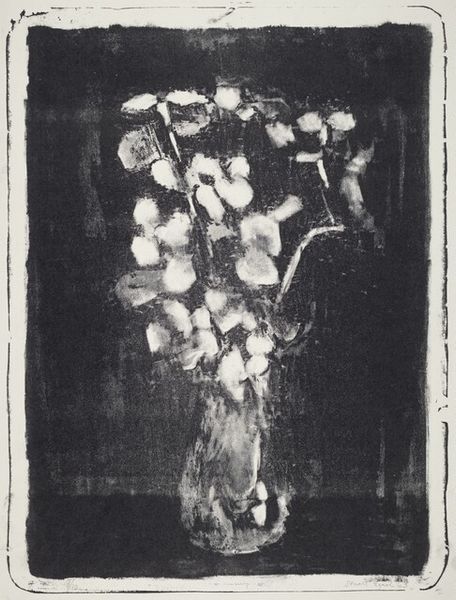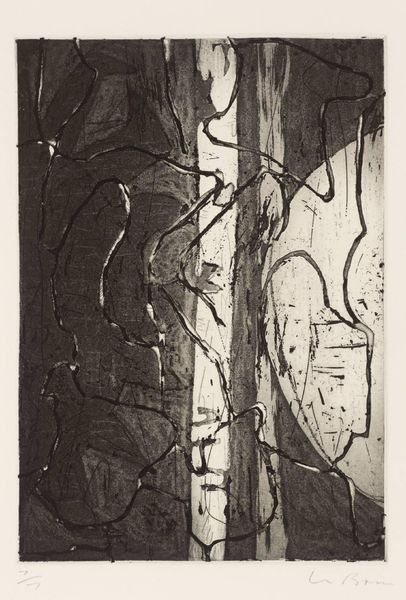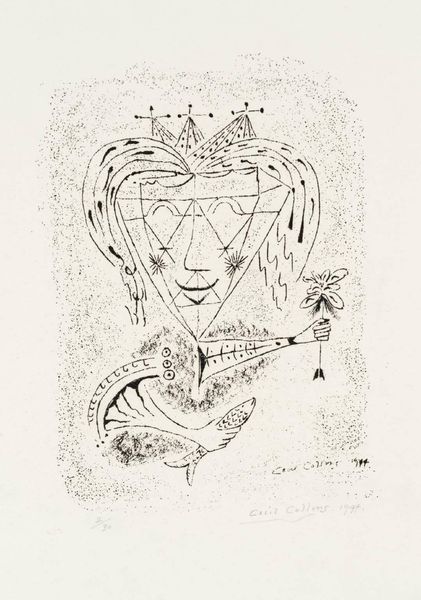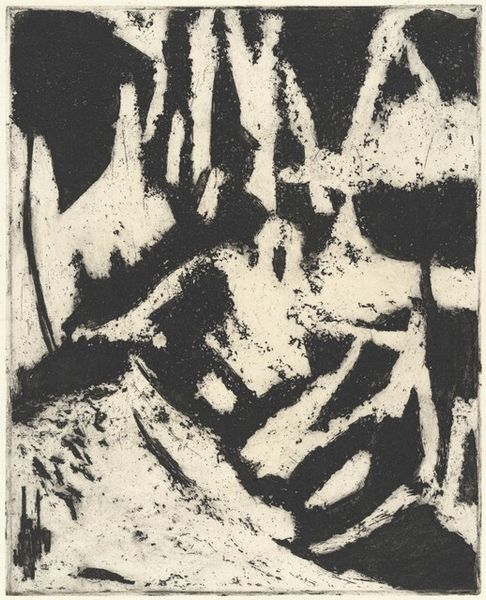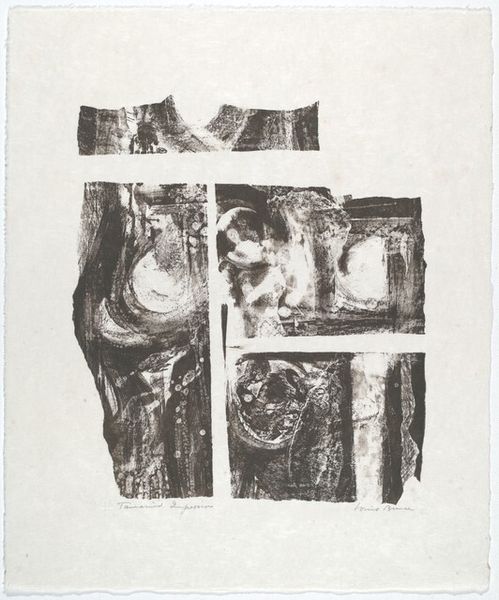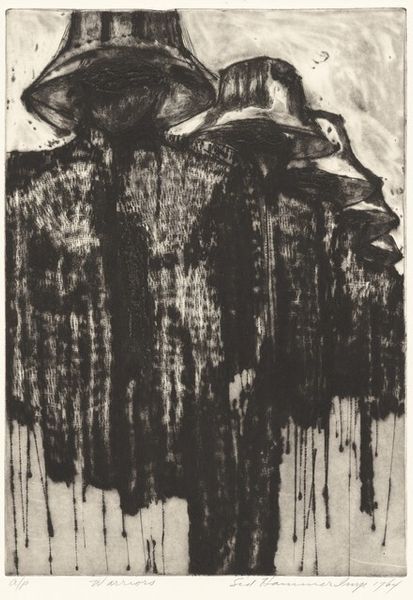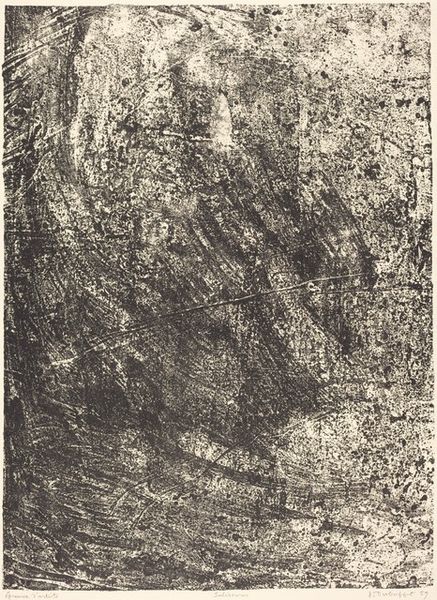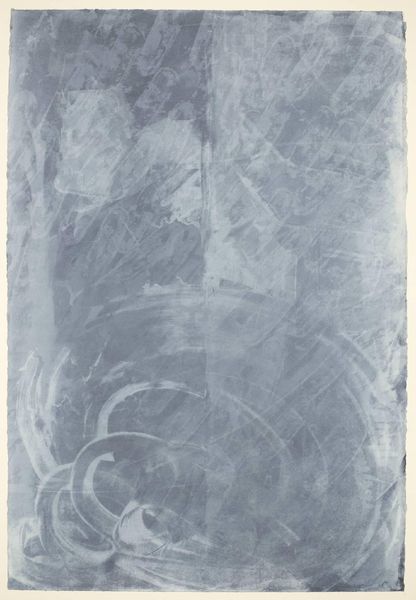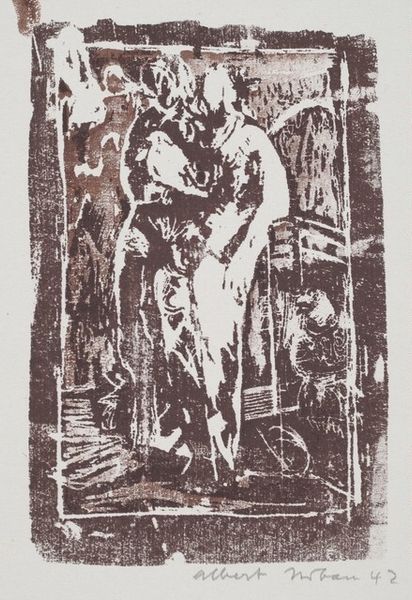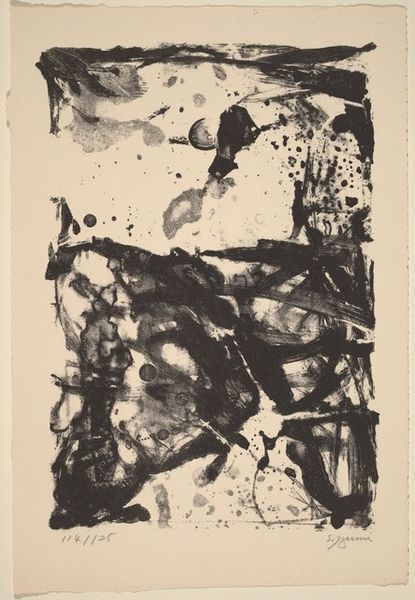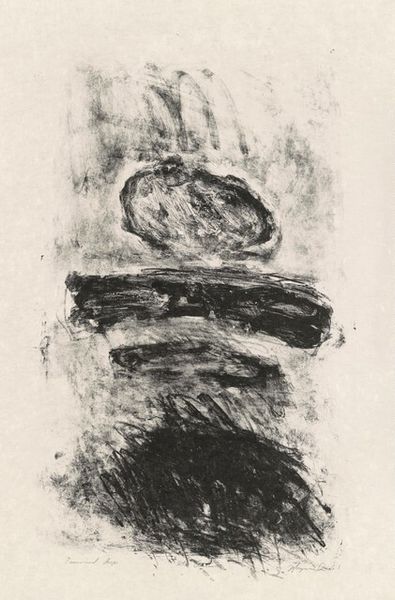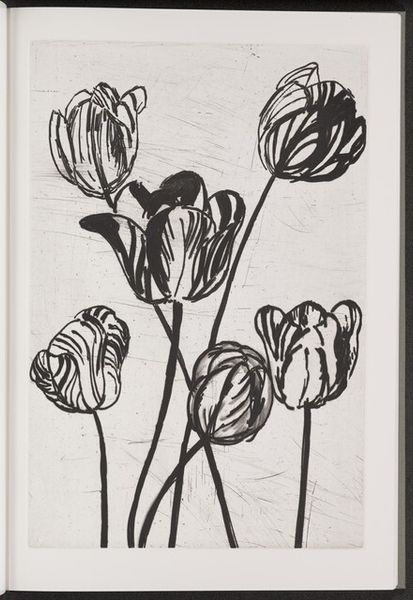
Dimensions: right panel: 113.67 × 78.74 cm (44 3/4 × 31 in.) overall: 78.74 × 157.16 cm (31 × 61 7/8 in.)
Copyright: National Gallery of Art: CC0 1.0
Editor: We’re looking at Jim Dine’s “The Hammer (with Watercolor Marks),” created in 1982. It's a print and drawing, and the graphite and watercolor really give it a powerful, almost aggressive feel. All those hearts seem vulnerable against the rough marks. What’s your interpretation of this piece? Curator: Well, from a historical viewpoint, the repetitive imagery and the use of everyday objects place Dine firmly within the legacy of Pop Art, but with a deeply personal twist. He moves beyond simply representing consumer culture. Editor: How so? Curator: Dine reintroduces the artist’s hand, the personal mark. Those roughly rendered hearts and the looming hammer disrupt any sense of cool detachment we associate with early Pop. It speaks to the public performance of personal experience in the media, the way trauma can be broadcast. Editor: That’s interesting. I was so focused on the violent implication of the hammer with the vulnerability of the hearts. Curator: Precisely. But consider also, what does it mean to repeat images of love when love is something so deeply personal? What does it become once displayed, made public? Think about celebrity heartbreak, the media coverage. Dine gives form to those complicated issues. What do you make of the small stripe of colours along the bottom? Editor: I hadn’t really considered that! Perhaps it signifies some kind of hopeful future amidst all this... complication? Curator: Exactly! And maybe the hammer isn’t destructive, but constructive. These colours remind me to question initial, easy associations with objects we consider iconic. Editor: This has really given me a new way of considering the role of personal symbols in public art. Curator: Me too. It’s amazing how art continues to spark those conversations.
Comments
No comments
Be the first to comment and join the conversation on the ultimate creative platform.



